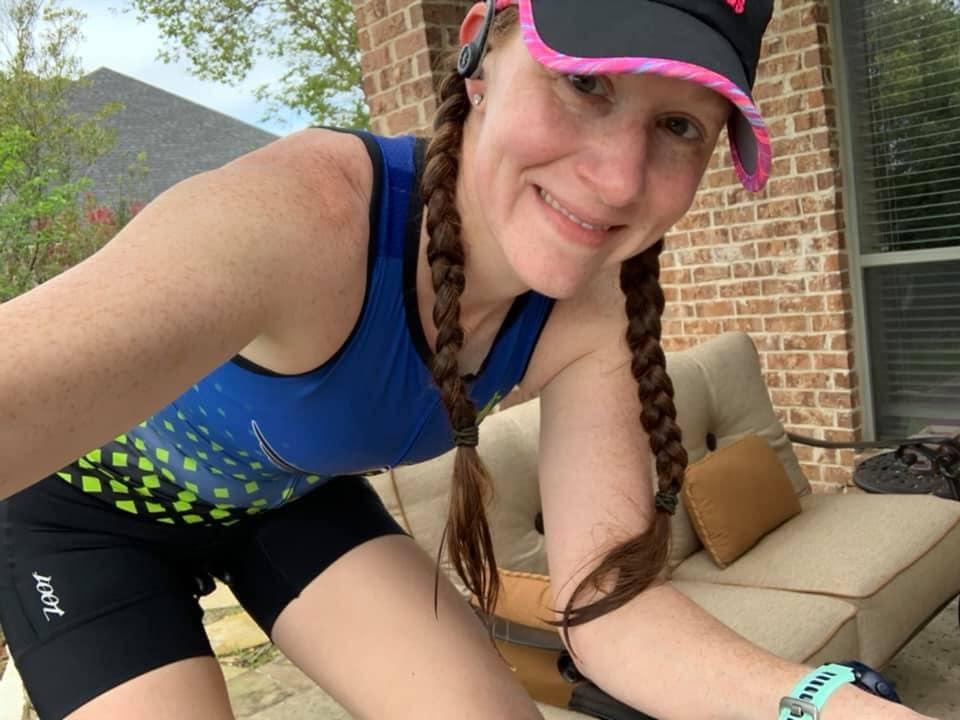
COVID Courage – An Athlete’s Guide to Staying Inspired
The COVID-19 Pandemic has brought the world to its knees. In terms of the number of documented cases, the USA has become the global epicenter and the real effects of this virus physically, emotionally, and financially have been felt widely and deeply. And we do not yet know how long these effects, this pain will linger. It’s like doing a race of an unknown distance.
As an athlete you know what it’s like to have shaky legs, to feel like your body is failing you, to wonder if you can even finish the race. Then you hit an aid station, like an oasis in the Sahara, and even the briefest of refreshment and re-focus boosts your ability to courageously dig deep and carry on.
Consider the advice below to be your COVID-19 Aid Station, serving up a much-needed dose of clarity and courage.
1. Remember your “why”
One of the silver linings of any crisis, big and small, is clarity. When the reality of mortality occupies our minds and hearts humans tend to shed the unnecessary and focus on the things that matter most.

You are an athlete for a reason. You chose your sport for a reason. You choose to continue to get on the bike, do another lap, hit the road. Why? Remember your why, your purpose. Write it down on the mirror, your hand, a sticky note. When the questions come, and man they’re comin’, more often than not the answer will be your why.
2. Self-Identity
While you re-focus on the “why” of your sport, remember that you are more than just a runner or a triathlete. You are a mother, a father, a child, a friend, a colleague, etc. And you are here right now, in the middle of this historic time, with purpose and opportunity unique to you. Be a tool in God’s hands, expand your unique capabilities, and fulfill your purpose. You will never have a more reliable training partner than you do in Him.
3. Routine
With the world turned upside-down our patterns and routines have been significantly impacted. It’s like running against the wind or facing a hill mid-race; it’s just harder. So, you create structure, a new routine, and lean into it.
These days especially, if you don’t own your day with a plan then it will own you. Rise to the moment. If you’re now working from home or were recently laid off now contemplating your next move, try to stay as close to your “normal” schedule as possible. Wake up, eat, and train at the same times. Resilience through routine.
4. Relax

Yes, the world has slowed…dramatically. This is not all bad. Just like a recovery day rests our bodies and minds so we can keep going, look at the downtime we all seem to have these days as a gift. Take up yoga. Take time to meditate. Relax.
Don’t be afraid to slow down. You know the pace will pick up again soon and you may find yourself longing for this extraordinary chance to reflect and rest.
5. Reverse Periodize
Like all athletes, your spring and summer race was cancelled or will be cancelled. “BC” (Before COVID) you were probably putting in higher training volume to get ready for races like Wildflower or Ironman Texas, or maybe even the Boston Marathon.
Now is the time to reduce some of the volume and work on opposite energy systems. Unlike the oxidative work, you should include some additional work in the ATP-PC system and the glycolytic system that you may have neglected over the last few weeks or even year. These workouts are high in power and short in duration.
An example would be an endurance ride including 5 x 20 second sprints at max power with a full recovery between each. This will help make you a more well rounded endurance athlete and improve your efficiency over time.
6. Work on Weakness
While you are relaxing (see #4 above) identify a weakness, or three, and work on turning them into strengths.
How is your running form? Is there room for improvement on your bike cadence? Should we focus on raising your Functional Training Power (FTP)? You decide where to start, but get started soon because this crisis will end and so will your chance to emerge from this crisis stronger. Seek out honest feedback from a training partner or coach to maximum impact.
7. Virtual Competition
We know a lot of people will be tempted to lie about their weight and FTP numbers to appear online better than their reality, but it’s the race against yourself that counts. No, a virtual race is not the same as an in-person race but because every race really boils down to a competition between your mental will and your physical ability a virtual race serves a great purpose.
Join a virtual race such as the Ironman Virtual Club or do a bike race on Zwift. There’s likely numerous events in your community like this one near me: the Community CoRUNa Series.

And don’t sweat the inherent shortcomings of virtual platforms. Instead focus on sweating to do your best. No doubt you will learn lessons applicable to your next race outside, toe-to-toe (6 feet apart?) with other competitors.
Conclusion
While humanity may be on its knees right now, as an athlete YOU know how to get up. You’ve done it before. Tap the muscle memory of courage and grit…and rise. People are watching and wanting to be inspired. Be that human. I will be right here cheering you on. Now, get back out there and keep moving!
About William Ritter
Ritter, from Tyler, Texas, is the Head Coach at Fly Tri Racing. He is a TrainingPeaks Level 2, Ironman U, USA Cycling, and USA Track and Field Certified Coach and USATF Cross Country Specialist. He specializes in coaching triathletes and runners of all abilities. Ritter’s coaching is detailed and based on the individual athlete blending the art and science of coaching. To learn more about Ritter and personal coaching visit www.flytriracing.com



